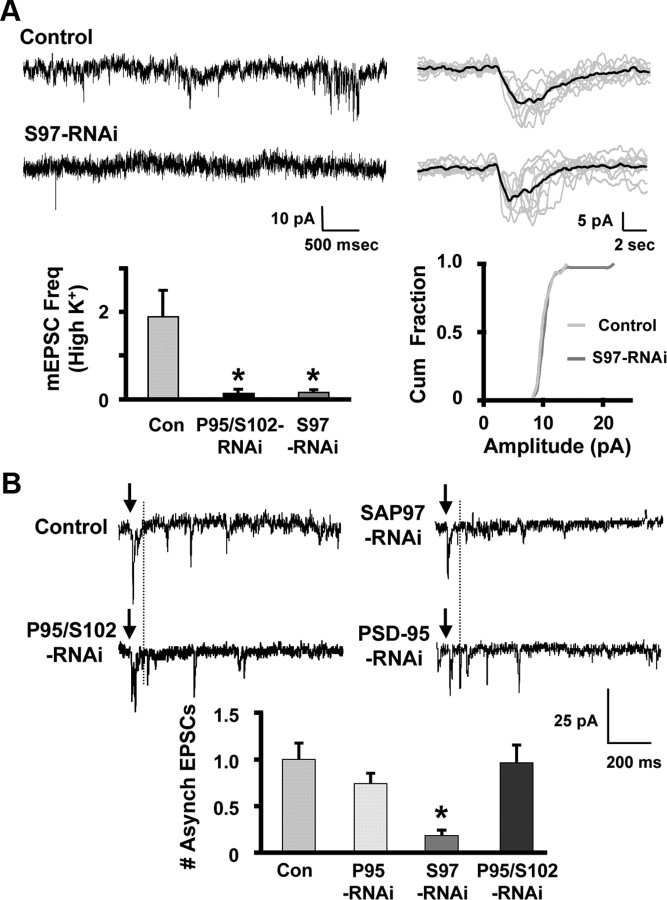Figure 4.
SAP97 sustains nicotinic transmission during extended depolarizations and supports asynchronous ACh release. A, Top left, Traces showing mEPSCs recorded from CG neurons in the presence of 10 mm KCl and 1 μm TTX. Top right, Overlay of 10 consecutive mEPSCs (gray) and the resulting mean (black) from the cells yielding the recordings. Bottom, Under these conditions, SAP97 knockdown significantly decreased mEPSC frequency (left; *p ≤ 0.05 by ANOVA with Dunnett's post hoc test; 14–28 cultures/condition), but did not alter mEPSC amplitude (right). B, Top, Traces showing responses in CG neurons to asynchronous release of transmitter. The cells were transfected with the indicated RNAi constructs targeting individual PSD-95 family members. EPSCs that occurred ≥100 ms (dotted line) after the stimulus (arrows) were counted as asynchronous release events. Bottom, Knockdown of SAP97 decreased the mean number of asynchronous events that occurred in response to a single stimulus. Knockdown of PSD-95/SAP102 or PSD-95 alone did not alter asynchronous release (values presented relative to controls in same cultures; *p ≤ 0.05 by ANOVA with Dunnett's post hoc test; 4–19 cultures/condition).

